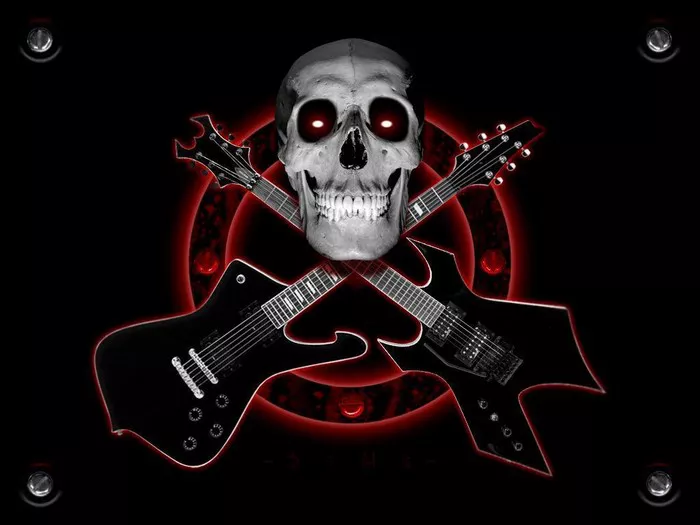Metal music, known for its thunderous guitar riffs, pounding drums, and often, powerful and guttural vocals, has carved its indelible mark on the global music landscape. Within the vast realm of metal, Norwegian black metal music stands out as a unique and controversial subgenre. In recent years, a documentary has emerged that delves deep into the heart of this enigmatic musical movement. This article will meticulously dissect the themes, historical context, and impact of the Norwegian black metal music documentary.
Origins of Metal Music: Setting the Stage
Before we plunge into the world of Norwegian black metal, it’s essential to understand the broader context of metal music. Metal, a genre characterized by its heavy use of distortion and amplified instruments, emerged in the late 1960s and early 1970s. While there were predecessors to metal, such as blues and rock, it was the desire to push the boundaries of music that birthed metal music as we know it today.
Metal music, in its various subgenres, has always been about rebellion and self-expression. It’s a genre that thrives on pushing the boundaries of what is considered conventional. Whether through the virtuosic guitar solos of power metal or the visceral aggression of death metal, metal music has continued to evolve and splinter into diverse subgenres over the years.
The Birth of Norwegian Black Metal Music: An Unholy Revelation
In the early 1990s, a dark and extreme subgenre known as Norwegian black metal music began to capture the attention of the global metal community. Black metal is characterized by its abrasive, lo-fi production, high-pitched shrieking vocals, and lyrical themes often rooted in Satanism, nihilism, and anti-Christian sentiment.
The Norwegian black metal scene was a crucible of creativity and controversy, spearheaded by bands like Mayhem, Burzum, and Darkthrone. The documentary in question masterfully captures the essence of this scene, shedding light on the motivations, ideologies, and extreme actions of the musicians involved. It provides an unfiltered glimpse into the world of Norwegian black metal music, showcasing its raw power and uncompromising ethos.
Metal Music and Controversy: The Dark Side of Norwegian Black Metal
Metal music, throughout its history, has courted controversy. From allegations of Satanism and violence to issues of censorship, the genre has often found itself at odds with mainstream society. Norwegian black metal, however, took this to an entirely new level. The documentary highlights this aspect of the genre, illustrating how the musicians and their actions became synonymous with notoriety.
One of the most notorious events in the history of Norwegian black metal music is the series of church burnings that occurred in the early 1990s. These acts of arson were not only an expression of rebellion but also a reflection of the extreme ideologies held by some musicians. The documentary provides a chilling account of these events, reminding us of the dark underbelly of metal music.
Metal Music and Artistic Innovation: The Sonic Landscape of Norwegian Black Metal
While controversy has often overshadowed Norwegian black metal music, it’s important to recognize its artistic innovation. The genre’s lo-fi production, characterized by a deliberate lack of polish, gives it a distinct and raw sound. The use of shrieking vocals adds an eerie and otherworldly quality to the music, while the lyrics delve into existential and philosophical themes.
In the documentary, viewers are treated to a sonic journey through the Norwegian black metal landscape. The metal music is at the forefront here, as the documentary explores the nuances of the genre’s sound, from its distorted guitars to its thunderous drumming. It’s a genre that revels in its darkness, and this is reflected in its unique sonic identity.
The Global Impact of Norwegian Black Metal Music
The influence of Norwegian black metal music extends far beyond the borders of Norway. The documentary underscores how this niche subgenre managed to captivate audiences worldwide. Its impact on subsequent generations of metal musicians is undeniable, as it inspired countless bands to explore the darker and more extreme facets of metal music.
Metal music, as a whole, thrives on diversity and innovation. While some may be drawn to the melodic harmonies of power metal, others find solace in the aggression of thrash metal. Norwegian black metal, with its unapologetically bleak and confrontational approach, has expanded the boundaries of what is possible within the broader metal genre. It has challenged musicians topush their creativity to the limit.
The Evolution of Metal Music: Norwegian Black Metal’s Legacy
As metal music continues to evolve, Norwegian black metal’s legacy endures. The metal music is not just a label; it’s a symbol of a genre that refuses to conform. The documentary serves as a testament to the enduring power of metal music to provoke, challenge, and inspire.
In the wake of the Norwegian black metal movement, numerous subgenres have emerged, each pushing the boundaries of metal music in its own way. From the atmospheric black metal of bands like Wolves in the Throne Room to the avant-garde experimentation of acts like Deathspell Omega, the influence of Norwegian black metal can be heard echoing throughout the metal landscape.
Conclusion
In conclusion, the Norwegian black metal music documentary provides a fascinating and in-depth exploration of a genre that has both captivated and polarized audiences around the world. It reminds us that metal music is not just a genre; it’s a force of nature, capable of channeling the darkest aspects of human experience into sonic artistry.
Throughout its history, metal music has continually pushed the boundaries of what is musically possible. Norwegian black metal, with its uncompromising stance and controversial history, is a shining example of the genre’s ability to evolve and challenge societal norms.
In a world where conformity often reigns supreme, metal music, and Norwegian black metal in particular, stands as a defiant reminder that art knows no boundaries. It’s a testament to the power of music to transgress, to provoke, and to inspire. Long may the dark flame of metal music burn, illuminating the shadows of our collective consciousness.

